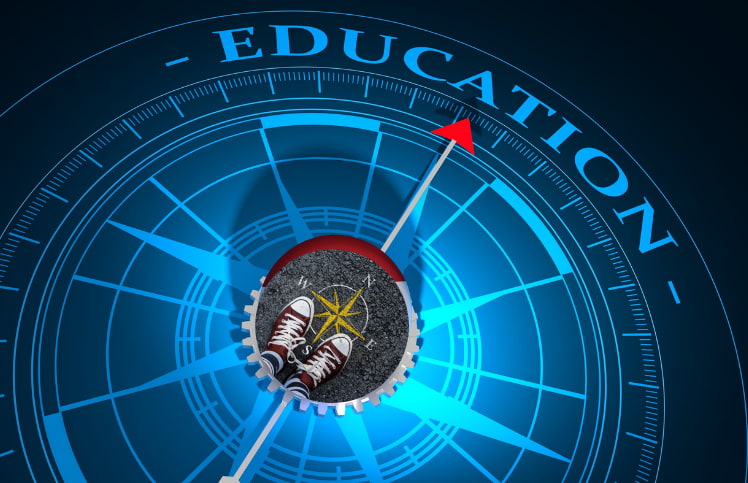by Gary Kaplan
How to rebound from the pandemic
“How much did the pandemic affect students?” asked the lede of a July 28 New York Times story. The answer came in the next line: “Dramatically.”
The Times story is one of many reports on a McKinsey & Company study released July 27 with the title “COVID-19 and education: The lingering effects of unfinished learning.” This study is being received as the first authoritative statement on the question that preoccupies the education world.
The study’s summary statement is that
- “…the impact of the pandemic on K-12 student learning was significant, leaving students on average five months behind in mathematics and four months behind in reading…. The pandemic widened preexisting opportunity and achievement gaps, hitting historically disadvantaged students hardest.”
The study cites related effects such as chronic absenteeism, dropping out of school, diminished enrollment in postsecondary education, and increased mental health and social-emotional problems. Turning to economic effects, it predicts losses of individual lifetime earnings and GDP resulting from lowered academic achievement.
Its recommendations are brief and sensible: Safely re-open schools; Re-engage students in effective learning environments; Create strategies to support students as they work to make up “unfinished learning”; Re-imagine our education systems. Threaded through these recommendations are roles for parents and partnerships with community-based organizations.
The most specific academic recommendation is to “…provide engaging, high-quality grade-level curriculum and instruction delivered by diverse and effective educators …supported by effective assessments to inform instruction and support.”
Most, if not all, of these findings have been advanced by others over the last many months, including our own Department of Elementary and Secondary Education. DESE’s advisories and recommendations since the beginning of the pandemic have been on point and foresighted. The most recent summary statement is the Acceleration Roadmap, a document that “sets the priorities needed to accelerate learning in our schools and classrooms.” This Roadmap goes deeper into practical, actionable detail than any other pandemic recovery prescription I have seen.
The Roadmap has two versions, one for school leaders and one for classroom educators. Since JFYNet operates in the classroom, I will focus on the teachers’ version.
The 27-page teachers’ Roadmap divides the school year into four phases and defines key priorities for each phase. Phase 1, Diagnostic and Planning, is the summer period prior to the first day of school. Phase 2, Launch, in September and October, involves welcoming students and families to the classroom and setting the groundwork for instruction. Phase 3, Progress Monitoring, runs from November to April. Phase 4, Reflection and Planning, takes place in May and June. Since September is just around the corner, I will focus on Phase 2.
This phase has three priorities: Welcoming students and families to the classroom; Monitoring students’ understanding; and Providing grade-appropriate assignments and scaffolding strategies. As a community-based academic support partner, JFYNet is most directly involved with priorities two and three.
Priority two, monitoring students’ understanding, is one of the cardinal points of JFYNet’s AIMS methodology: Assess, Instruct, Measure, Support. DESE’s Steps for Success advise using curriculum-embedded assessments to collect timely and relevant academic data to monitor students’ understanding of grade-level content. They go on to prescribe using school-based data analysis cycles to analyze formative assessment data in collaboration with ESL teachers and special education teachers in order to target specific strengths and areas for growth and to revisit IEP goals.
Priority 3, grade-appropriate assignments and scaffolding strategies, combines JFYNet’s Instruct and Measure. DESE’s Steps for Success begin with evaluating the quality of assignments to ensure high quality grade-appropriate instructional materials and setting high and transparent expectations to support the development of students’ academic skills and identities as learners.
The assessment data enable teachers to identify instructional gaps and provide differentiated just-in-time interventions. These interventions may include updating pacing guides, planning scaffolding strategies, and incorporating multiple appropriate entry points for students at different English language proficiency levels and for students with learning disabilities.
JFYNet supports all these assessment, instruction, and measurement strategies. In the next installment of this post, we will go into further detail on the Acceleration Roadmap and the ways in which JFYNet supports it.
Gary Kaplan is the executive director of JFYNetWorks.
Other posts authored by Gary can be found here.
HOW ARE WE DOING? In our pursuit to serve up content that matters to you, we ask that you take a couple of minutes to let us know how we’re doing? Please click here to be navigated to our JFYNet Satisfaction Survey. Thank you!





